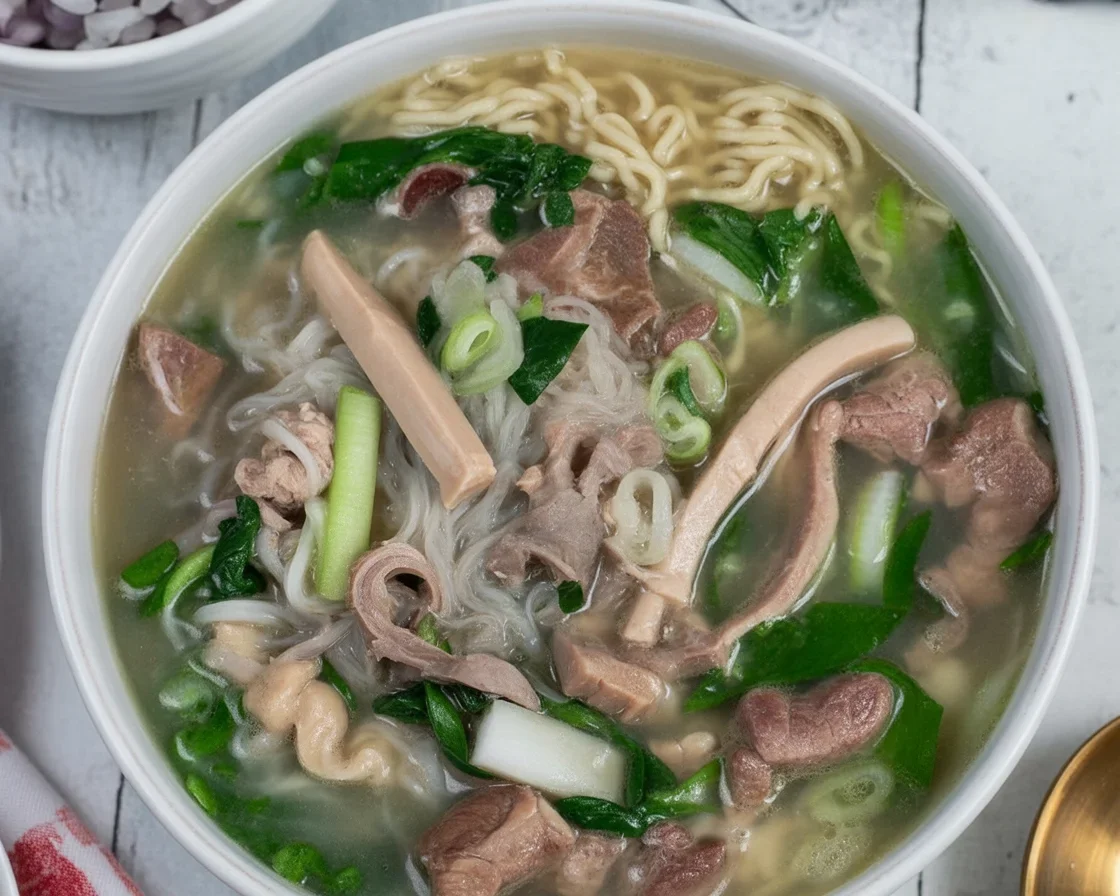- What is la paz batchoy?
- Ingredients list
- Preparing broth
- Cooking noodles
- Adding toppings
- Serving hot
- Regional variations
- Common Questions
- Why You Should Definitely Try Making La Paz Batchoy Soon
Filipino la paz batchoy is the sort of soup that haunts you—in a good way—after just one cozy bowl. Ever have one of those days when nothing seems to hit the spot, and then, bang, out of nowhere, someone hands you a bowl of this steamy, meaty, noodle-packed magic? Welcome to my world. When I’m craving something real, honest, and seriously satisfying, this is what I need simmering away in my kitchen. Compared to other Filipino favorites like goto or maybe a cooling bit of maja blanca, la paz batchoy always wins when it’s rainy, or I’m feeling just a little homesick.
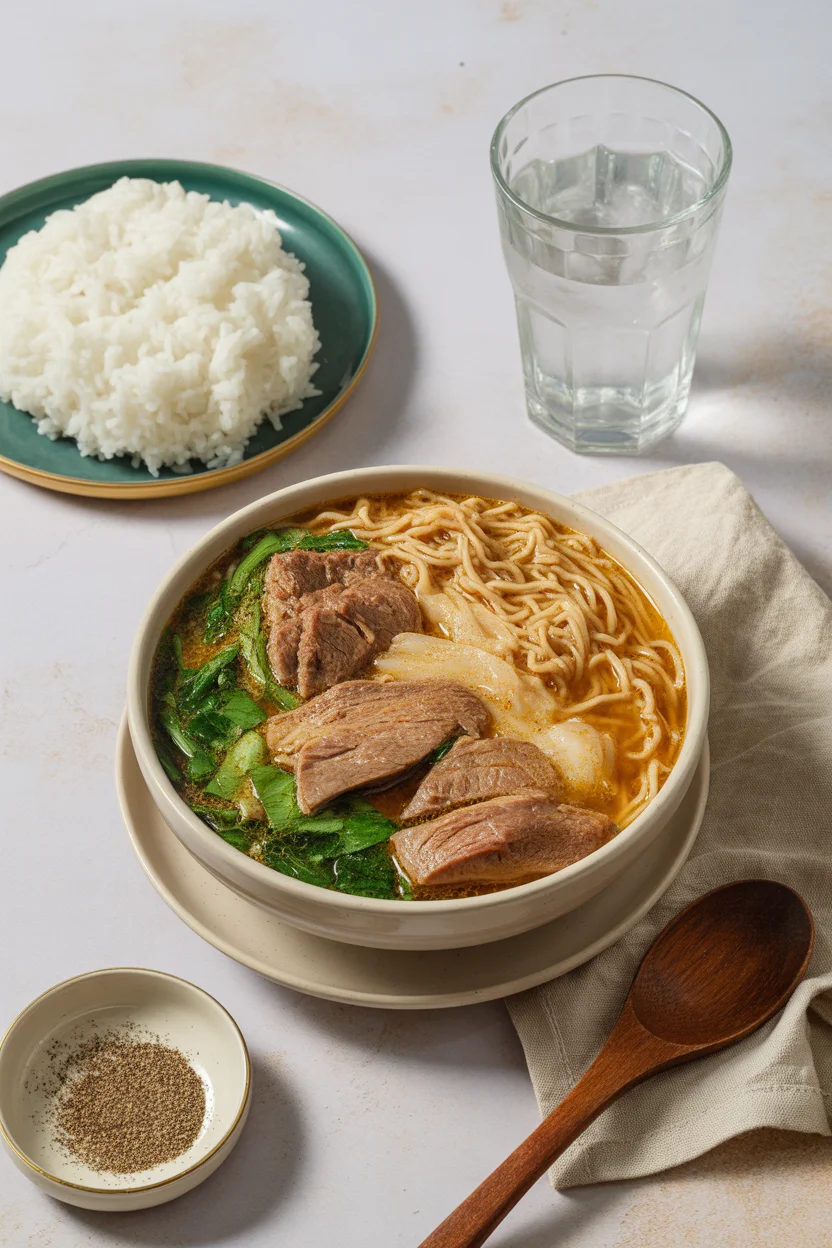
What is la paz batchoy?
Here’s the deal. La paz batchoy is famous noodle soup from Iloilo, in the Visayas region of the Philippines. The bowl is like a warm hug. Think rich, homemade broth loaded with fresh noodles, meat, and crispy toppings. It’s hearty but not heavy, and somehow both nostalgic and just a little bit extra.
I first had la paz batchoy in a tiny eatery that looked more like someone’s living room than a restaurant. The smell alone, man—it pulls you in. Slightly sweet pork and beef broth, noodles (not the instant type, please), and a glorious pile of fried garlic and chicharon on top. Each family, each street vendor, has their own twist. But the essentials? Always there.
You know what always gets me? It’s one of those soups where the spoon is basically just for show. You dive in fork-first (or chopsticks, whatever’s handy), then chug that broth right from the bowl. It’s messy, it’s noisy, but that’s the joy.
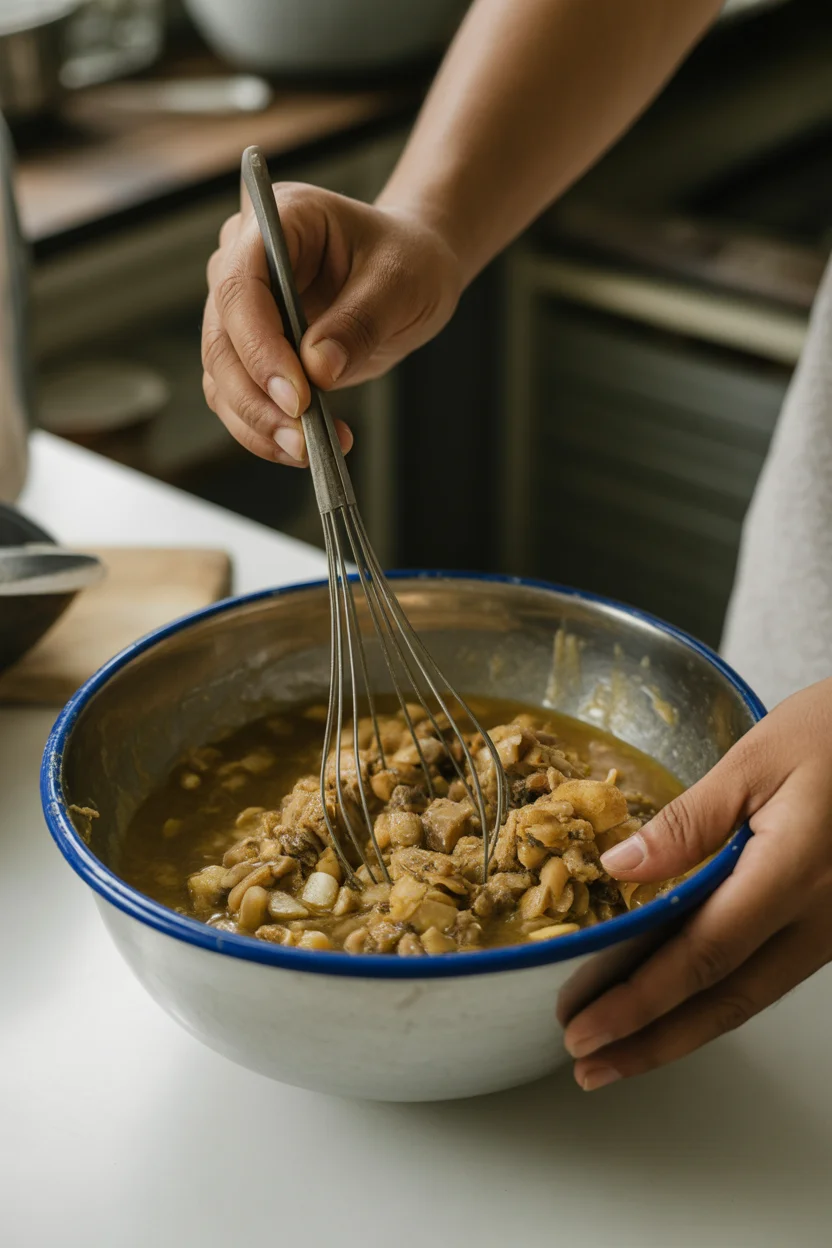
Ingredients list
Alright, let’s talk the important bits for homemade la paz batchoy. (You don’t need to go all out, but the more you add, the happier you’ll be.)
- Fresh miki egg noodles (not spaghetti please, let’s keep it real)
- Pork bones (for broth)
- Beef bones, if you want extra depth
- Pork liver slices (sounds odd, tastes awesome)
- Sliced pork (belly’s the best, in my opinion)
- Crushed garlic (not shy about it)
- Chopped spring onions
- Chicharon (crispy pork cracklings, your new best friend)
- Fish sauce and soy sauce
- Ground pepper
- Sometimes a little shrimp or shrimp paste sneaks in
- Optional: bone marrow, beef tripe, or shrimp (depending on your mood)
The magic? This is honestly pantry stuff if you cook Filipino a lot. But even if not, nothing’s impossible with a good Asian market adventure.
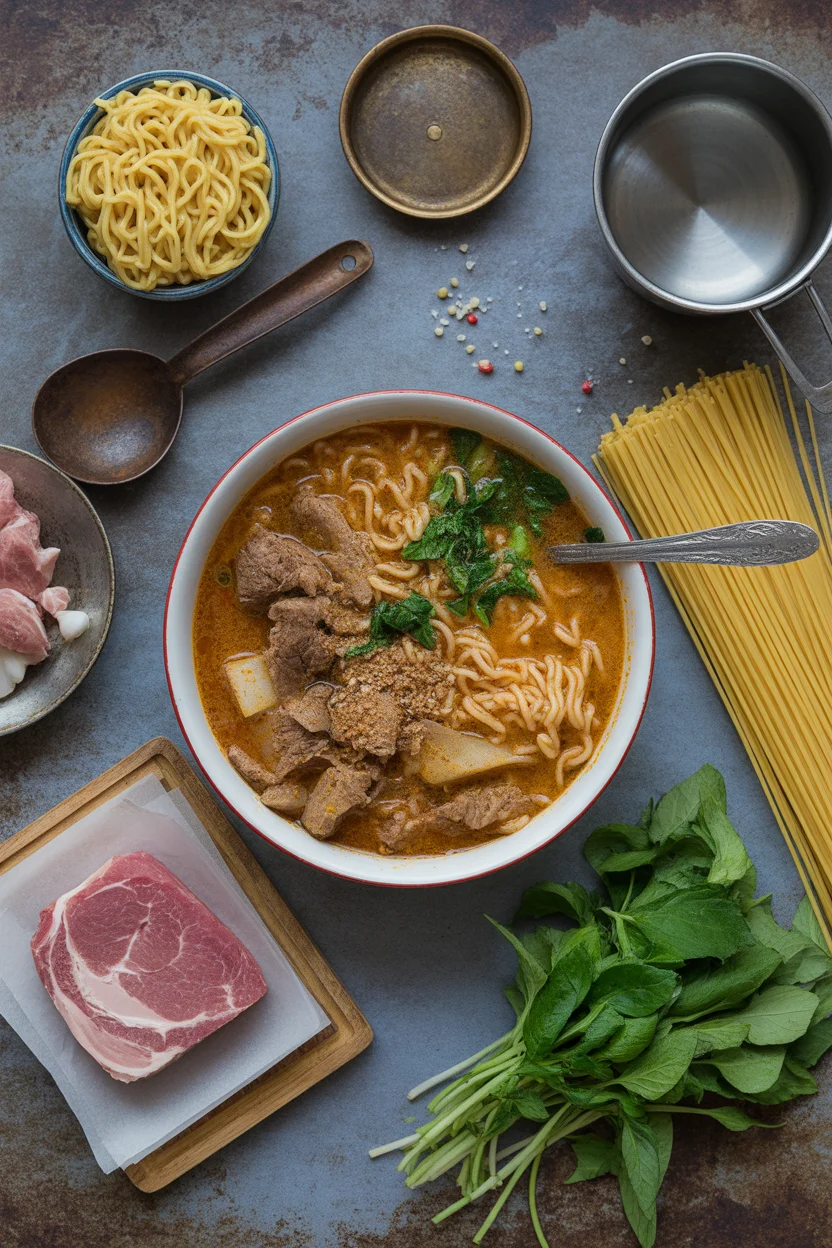
Preparing broth
So making broth… don’t let it scare you. It’s the heart of la paz batchoy, and it’s not rocket science. Throw pork bones (plus beef, if you’ve got it) in a big pot with lots of water. Bring it all to a boil and let that go for at least an hour. Ignore impatient folks. This is not instant soup.
About halfway through, add garlic—lots of it—for flavor you’ll never get from a jar of bouillon. Skim off that weird-looking foam on top. You want clear, honest soup. At this point, add a bit of fish sauce and soy sauce, but taste as you go. You control the saltiness.
Here’s my opinion—let it simmer as long as you can stand. The longer, the better. It’s the difference between “just okay” and “five-star restaurant in your house.” Toss in pork slices toward the end so they don’t go rubbery.
“My grandma said the secret to a good la paz batchoy is patience. I thought she was nuts until I made the broth myself. Now I get it—it’s 100 percent worth the wait.”
Cooking noodles
Let’s talk noodles, the unsung superstar in la paz batchoy. Trust me, using the right noodles makes all the difference. Fresh miki noodles are the classic, but if you can’t get ‘em, slightly thicker egg noodles do the trick. Just please, no dry pasta or ramen packs—honestly, it’s not the vibe.
While your broth is finishing up, boil a separate pot of water just for the noodles. Drop them in the boiling water. They should only take a couple minutes if fresh, maybe a bit more if not. Don’t overcook them, though. Mushy noodles in la paz batchoy? Sadness in a bowl. Drain and rinse with warm water, just to get rid of the extra starch.
Here’s a not-so-secret tip: toss the noodles with a drizzle of oil before serving, so they don’t all clump up. Learned that the hard way once (imagine one noodle-lump disaster) and never again.
Adding toppings
Okay, so you’ve got noodles in a bowl, and your broth’s ready. Now you pile on the joy. Scoop over piping hot broth, drowning those noodles in pure comfort. Top with thinly sliced pork and maybe some pork liver, if you’re brave. Add an absurd amount of chopped spring onion and fried garlic—seriously, don’t hold back.
And don’t forget the finishing moves:
- Heap on a generous mound of crunchy chicharon (trust me, addicting!)
- Extra fried garlic if you feel wild
- A sprinkle of fresh ground pepper
- Drizzle of fish sauce or a touch of soy (taste before adding more salt)
- Feeling bold? Add a bone marrow chunk or beef tripe for real street-side flair
You can get as fancy or as simple as you like here. Make it your own. That’s the charm of la paz batchoy—no two bowls ever look exactly alike.
Serving hot
This part’s easy. La paz batchoy is best when it’s really hot. Like, almost-too-hot-to-eat hot. I never understood that until I went to Iloilo—no one messes around with lukewarm batchoy there, that’s for sure.
Three tips for totally pro serving (okay, at least non-disappointing):
- Serve with a side of extra chicharon, in case folks need to pile on more crunch.
- If you’re Filipino, or just really Filipino at heart, have it with pandesal or crusty bread. You’ll thank me.
- Have a cold drink ready nearby. Trust me; you’ll need it, especially if you’re heavy-handed with the pepper.
And never, ever serve la paz batchoy in a paper cup. Treat this soup with respect (okay, mini rant over!).
Regional variations
Every region seems to have some tiny twist on la paz batchoy, especially when you travel across the Philippines. Iloilo, of course, claims to have the OG version. They go heavy on pork, with tons of chicharon and often a good chunk of bone marrow for max flavor. In other places, you’ll see beefy broth instead—or sometimes chicken thrown in, if that’s what’s around.
Then you hit other islands, and sometimes someone’s uncle starts putting shrimp or fish balls in there. Not totally traditional, but you know what? It’s still la paz batchoy if it brings a smile. That’s the thing with Filipino food. It adapts and grows, depending on who’s hungry and what’s in the fridge.
After all my years eating it all over—the best versions are still the messy, slightly-too-big bowl, right in Iloilo’s la paz market, with a quick bottle of soda on the side.
Common Questions
Is la paz batchoy spicy?
Not usually, but you can add pepper or a little chili oil to kick it up if that’s your style.
Can I substitute the noodles?
If you really must, thick egg noodles are okay, but the real deal uses fresh miki. Try an Asian market!
Do I have to use pork liver?
Nope, but it’s super traditional (and way tastier than you’d think). Leave it out if it’s just not your thing.
Can I make broth ahead of time?
Definitely! In fact, the flavor gets even better if you let it sit overnight in the fridge.
How long does leftovers keep?
Broth, a few days in the fridge. Noodles, just cook as you go—don’t leave them to sit or they get sad and soggy.
Why You Should Definitely Try Making La Paz Batchoy Soon
So, there you have it—my favorite, totally slurp-worthy take on la paz batchoy. Give yourself a Sunday afternoon, set up the kitchen, and go for it. I promise it’ll beat takeout by a mile, and the smell alone will have your friends wondering if you’ve opened a noodle shop. If you want to nerd out, check more details over on Batchoy – Wikipedia or see a killer, mouthwatering version from La Paz Batchoy – Kawaling Pinoy. Folks are wild about this all over, just peek at a thread like I ate La Paz Batchoy (Filipino Ramen).
Anyway, if you’re feeling kitchen-curious, you might want to try pairing it with a classic goto one day, or honestly—even dessert like maja blanca. Go for a second bowl. Live a little!
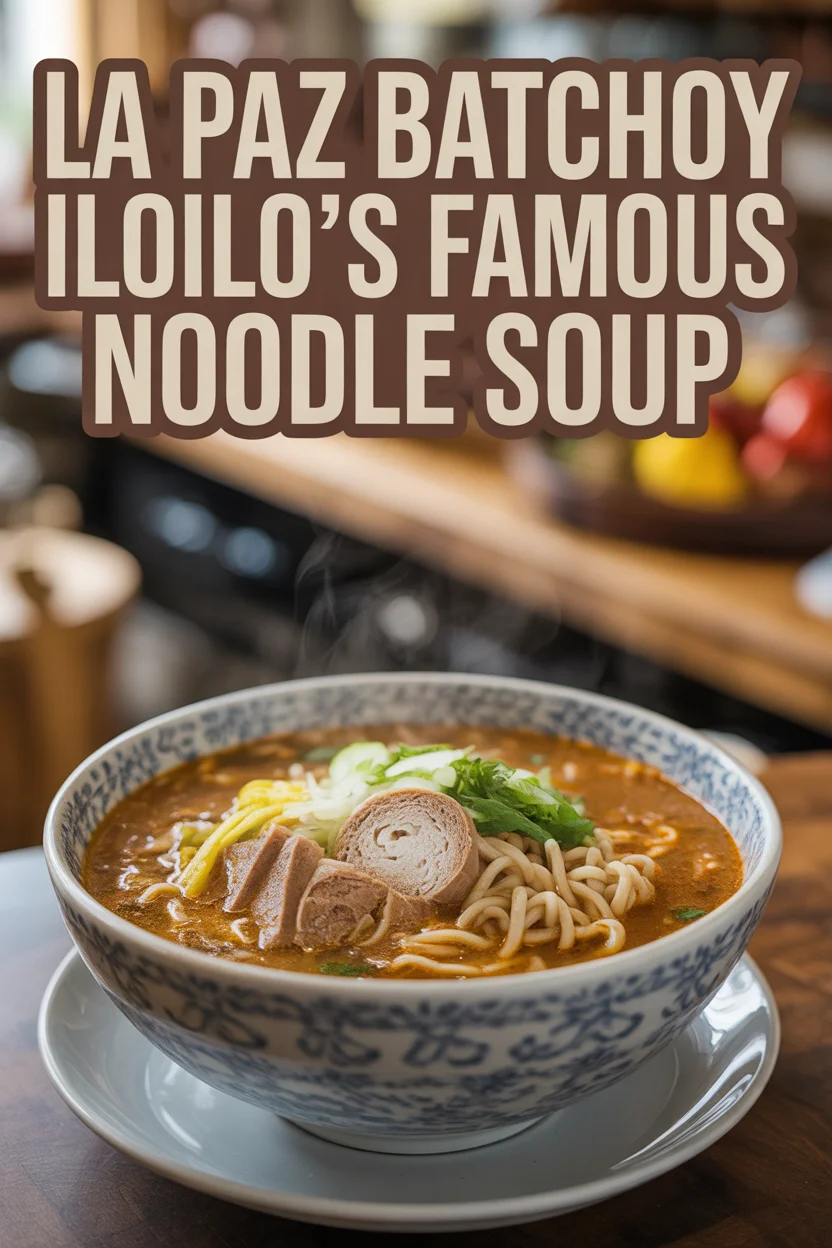
La Paz Batchoy
Ingredients
For the Broth
- 2 lbs Pork bones Essential for rich broth
- 1 lb Beef bones Optional for extra depth
- 1 cup Crushed garlic Use generously
- 2 tablespoons Fish sauce Adjust to taste
- 2 tablespoons Soy sauce Adjust to taste
- 1 teaspoon Ground pepper Add according to preference
Noodles and Toppings
- 1 lb Fresh miki egg noodles Do not substitute with dry pasta
- 1 cup Pork liver slices Optional but traditional
- 1 lb Sliced pork Pork belly recommended
- 1 cup Chopped spring onions For garnish
- 1 cup Chicharon (crispy pork cracklings) For topping
- 2 tablespoons Extra garlic (fried) For topping, optional
- 1 tablespoon Bone marrow Can add for richness
- 1 cup Shrimp or shrimp paste Optional addition
Instructions
Preparing the Broth
- Place pork and beef bones in a large pot, cover with water, and bring to a boil.
- Reduce heat and simmer for at least 1 hour. Skim off any foam.
- Add crushed garlic, fish sauce, and soy sauce, tasting as you go for saltiness.
- Simmer for as long as possible for maximum flavor, and add pork slices in the last 10 minutes.
Cooking the Noodles
- In a separate pot, bring water to a boil and add fresh miki noodles.
- Cook for 2-3 minutes and drain; rinse with warm water to remove excess starch.
- Toss noodles with a drizzle of oil to prevent clumping.
Assembling the Dish
- Place noodles in a bowl and pour hot broth over them.
- Top with sliced pork, liver, chopped spring onions, and fried garlic.
- Add chicharon, extra fried garlic, ground pepper, and a drizzle of fish sauce.
Serving
- Serve immediately while hot, with extra chicharon and cold drinks on the side.
